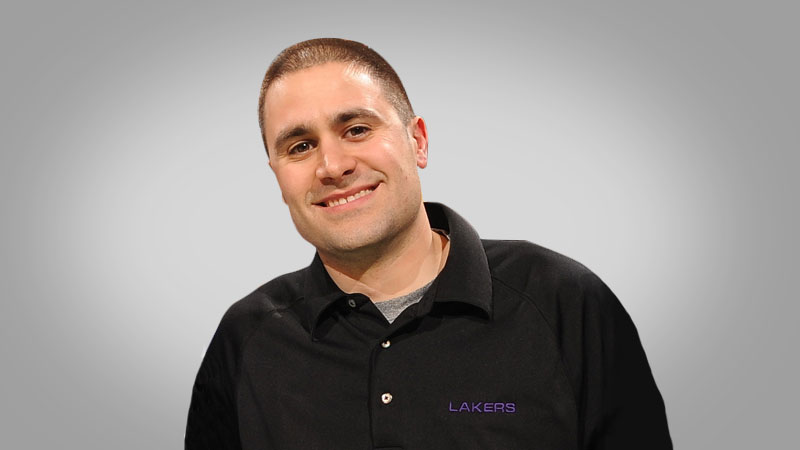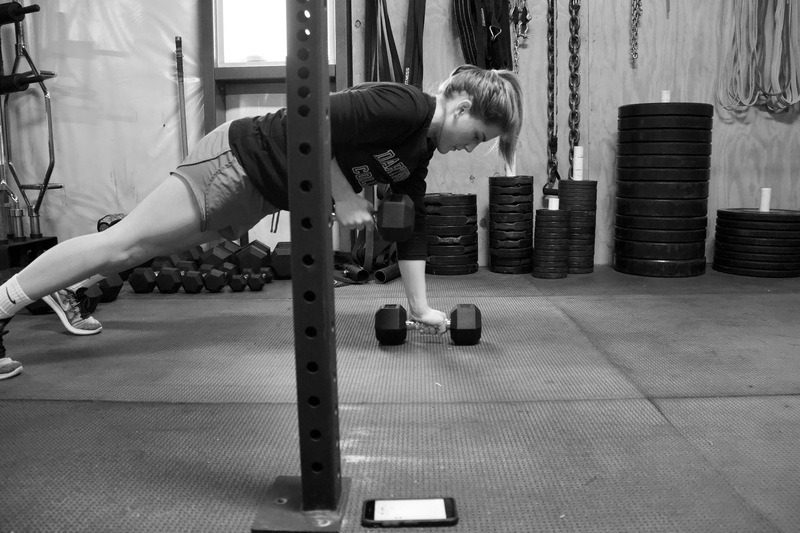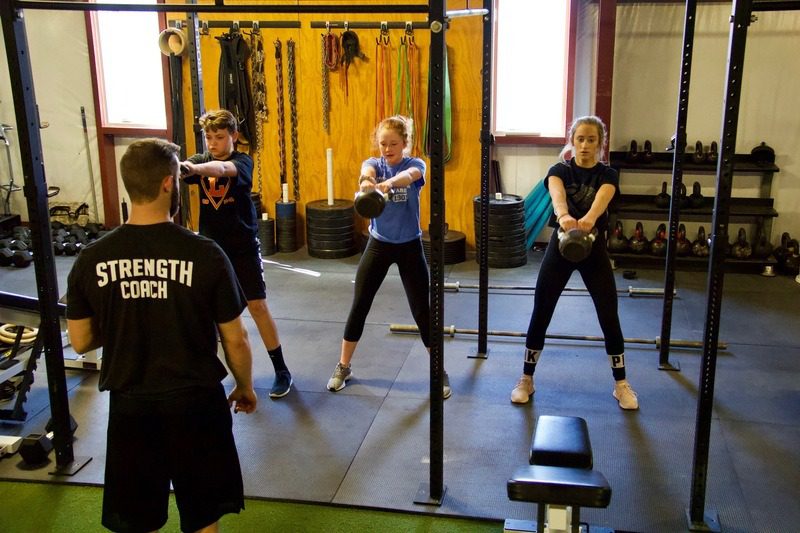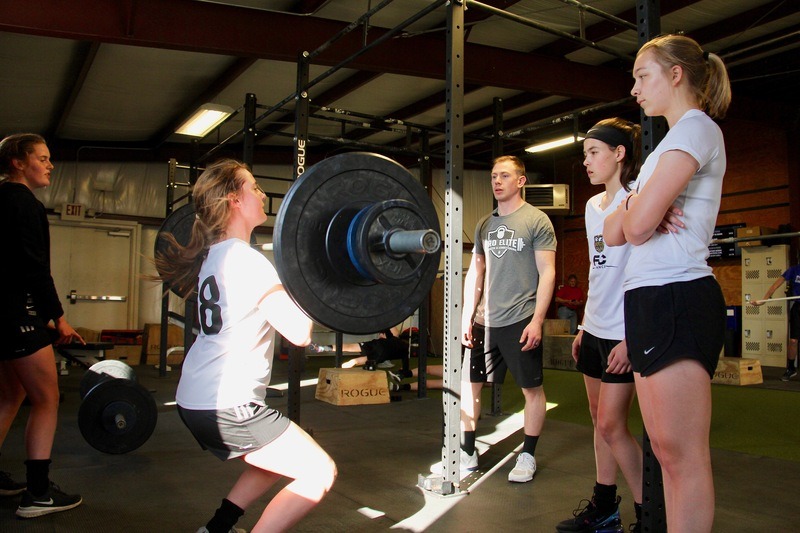Young Athlete Resistance Training: When To Start & How To Stay Safe
Strength & ConditioningABOUT THE AUTHOR

Tim DiFrancesco
Tim DiFrancesco, PT, DPT, ATC, CSCS spent 6 seasons as the Head Strength & Conditioning Coach of the Los Angeles Lakers and founder of TD Athletes Edge. He is nationally renowned for his evidence-based and scientific approach to fitness, training, nutrition and recovery for athletes and fitness enthusiasts.
While there are more nuanced answers I could give, let’s go with: “It depends” and “No.”
// How Young is Too Young?
Though there is no hard and fast rule for when a child can begin a resistance training program that will eventually include some form of weightlifting, a good rule of thumb is 10 to 14 years old. Yes, I’m expecting a bunch of contrary comments, and that’s OK. It really varies based on the individual development level of the student-athlete in question.

With regard to the second common question, Wolff’s Law actually states that the structural system grows stronger and more resilient with exposure to progressive load.
While this doesn’t mean your young players should be trying to PR their deadlift or back squat every time they go to the gym (or, if they’re your own kids, join you for a garage workout), it does suggest that when a program is developed cautiously, resistance training can actually help kids become resilient enough to handle the rigors of sports, growth spurts, academics, and social dynamics.
So while we can see certain cases of far too much training too young interfering with normal development (as in some gymnasts), generally resistance training is fine if it’s carefully overseen and monitored by an expert coach with a proven background in developing youth strength and conditioning. Often when there’s an issue, it’s not the timing but the application that’s at fault.
// Building a Movement-Based Foundation
Long before you start loading up a barbell and putting a kid in a squat rack or on an Olympic lifting platform, you need to first make sure they’ve acquired sufficient movement literacy. This means demonstrating competence in what my good friend Dr. Kelly Starrett calls the movement archetypes: the lunge, hinge, squat, and various positions of the shoulders (hang, press, pull, and overhead).
This should be developed with bodyweight movements to begin with. Once a young athlete has shown mastery in all the major positions, you can then progress to using a dowel, stick, or PVC pipe.
You can also start to look at how they jump and land, such as in a drop squat. If they can start and finish in a solid position, then what happens in the middle will usually be OK. I also find utilizing primal movements like bear crawls and walking inchworms to be beneficial.
Any other approach to resistance training runs the risk that the youth athlete lacks the requisite kinesthetic awareness and neuromuscular control to handle velocity, load, and duration. This can then lead not only to mechanical compromises and the ingraining of poor technique, but also greatly increase the chance of injury.
This is why a sustainable program must be built on a foundation of movement quality.
// Starting Resistance Training – So Now What?

Once you’re sure that a young athlete has sufficient movement skills and self-awareness, then you can start to introduce resistance exercises one to three times a week. Sessions can last anywhere from thirty minutes to an hour, including warmup, cooldown, and mobility exercises.
Here are some of my go-to exercises for each of the major archetypes:
Hinge:
Elevated kettlebell deadlift. Once you’re sure they have the requisite range of motion, remove the elevation.
Squat:
Dumbbell goblet box squat. The box provides a tactile cue that helps kids build awareness of how far to go down before standing back up.
Mid-position press:
Pushups teach how to keep the upper and lower body together through the trunk and reinforce good shoulder mechanics and scapular control.
Lunge:
Split squats with both feet staying in place utilize the quads, glutes, and encourage good posterior chain sequencing. You can progress to a dumbbell or medicine ball goblet squat to lateral press, in which the feet again stay planted at first to reduce the demands of the movement.
Pull:
A TRX Suspension Trainer row is a good starting exercise that emphasizes body control. If an athlete is ready to move on to pull-ups and chin-ups, then isometric holds and exaggerating the eccentric portion (i.e. lowering from the bar slowly) can help them build up to doing full reps.
Vertical press:
Use a landmine press with just the bar to start, and have them press it up and out instead of going completely vertical.
Rotation:
Farmer’s carry. It’s best to have young athletes resist rotation at first, rather than creating it with medicine ball tosses or other dynamic variations they can learn later. Planks and side planks are also beneficial.
// A Slow Baking Process Delivers Better Bread
If a kid’s movement quality, velocity, or endurance seems to be declining, take a look at their sporting schedule and back off the number of activities they’re doing. Playing too many games can be detrimental. Rather than cutting out the resistance work that will make them more resilient, dialing down the volume of competition is often the best way ahead.
Using too much weight too soon is another common pitfall. Just because a kid is full of energy doesn’t mean they can or should go all out all the time.
Don’t ever layer strength or speed on top of dysfunction. Also don’t make the mistake of judging their capacity based on their attitude or work ethic. Teenagers tend to think they’re indestructible and that can work against them sometimes.
You don’t want to burn the bread, so it needs to be a long, slow “baking” process that can take weeks, months, or even years to get right. The responsibility on you as a coach is too great to do it any other way.

Are you a better coach after reading this?
More coaches and athletes than ever are reading the TrainHeroic blog, and it’s our mission to support them with usefull training & coaching content. If you found this article useful, please take a moment to share it on social media, engage with the author, and link to this article on your own blog or any forums you post on.
Be Your Best,
TrainHeroic Content Team
HEROIC SOCIAL
HEROIC SOCIAL
TRAINING LAB
Access the latest articles, reviews, and case studies from the top strength and conditioning minds in the TH Training Lab

